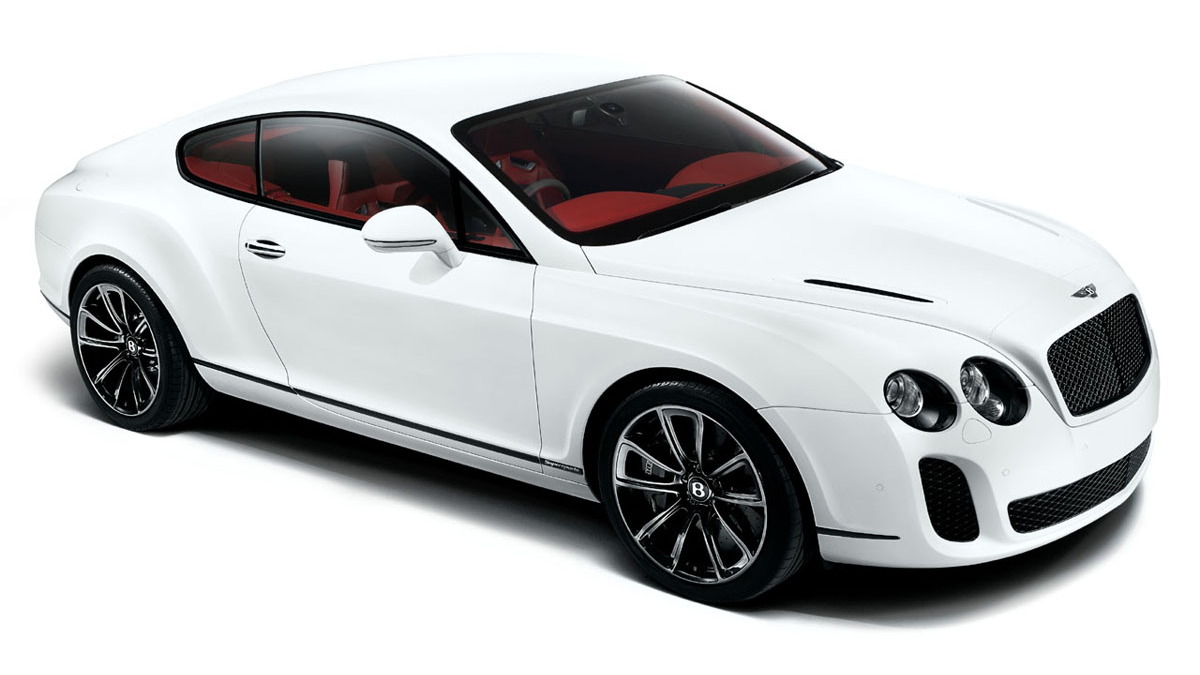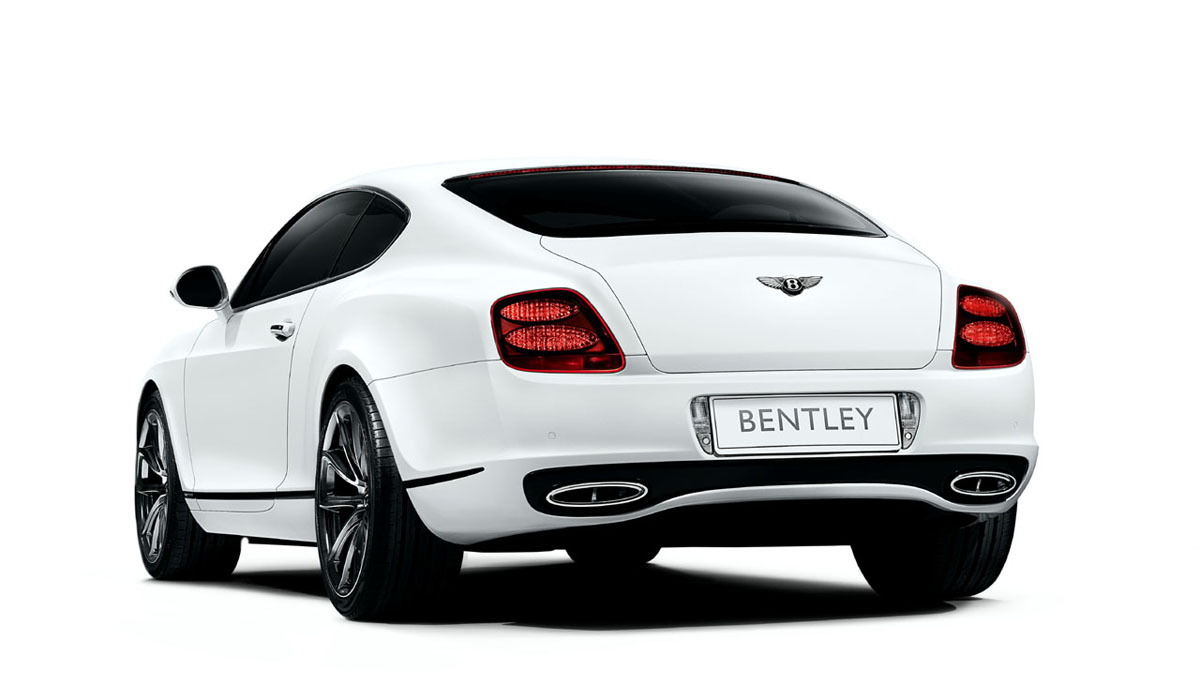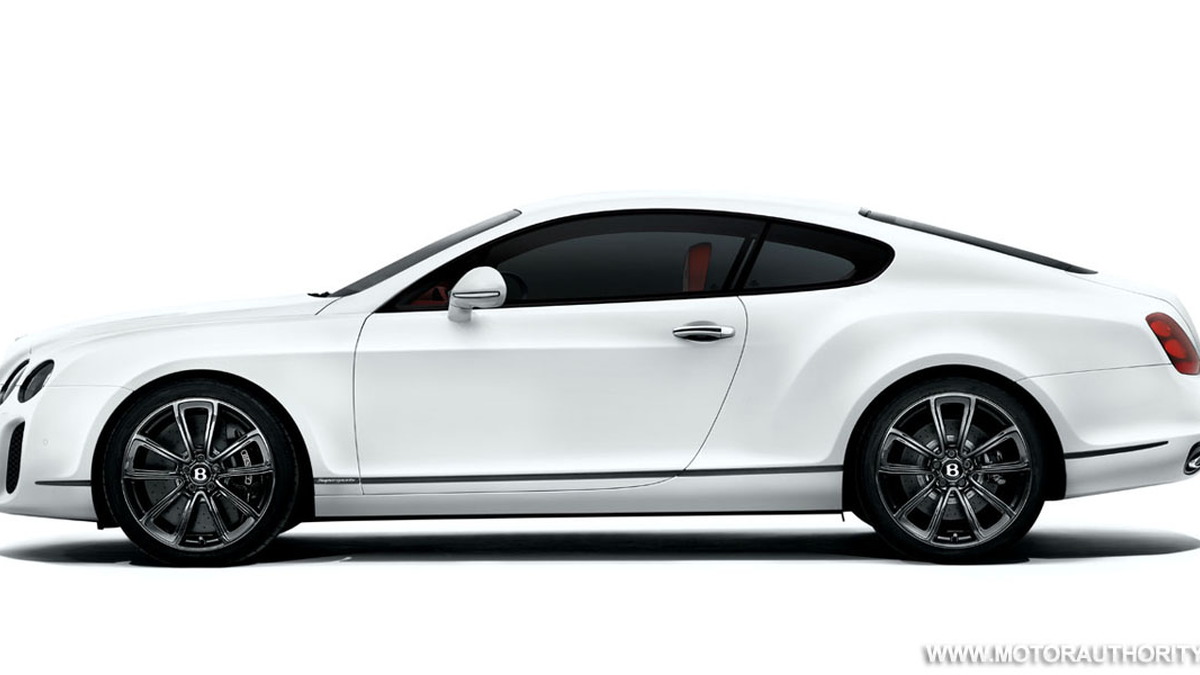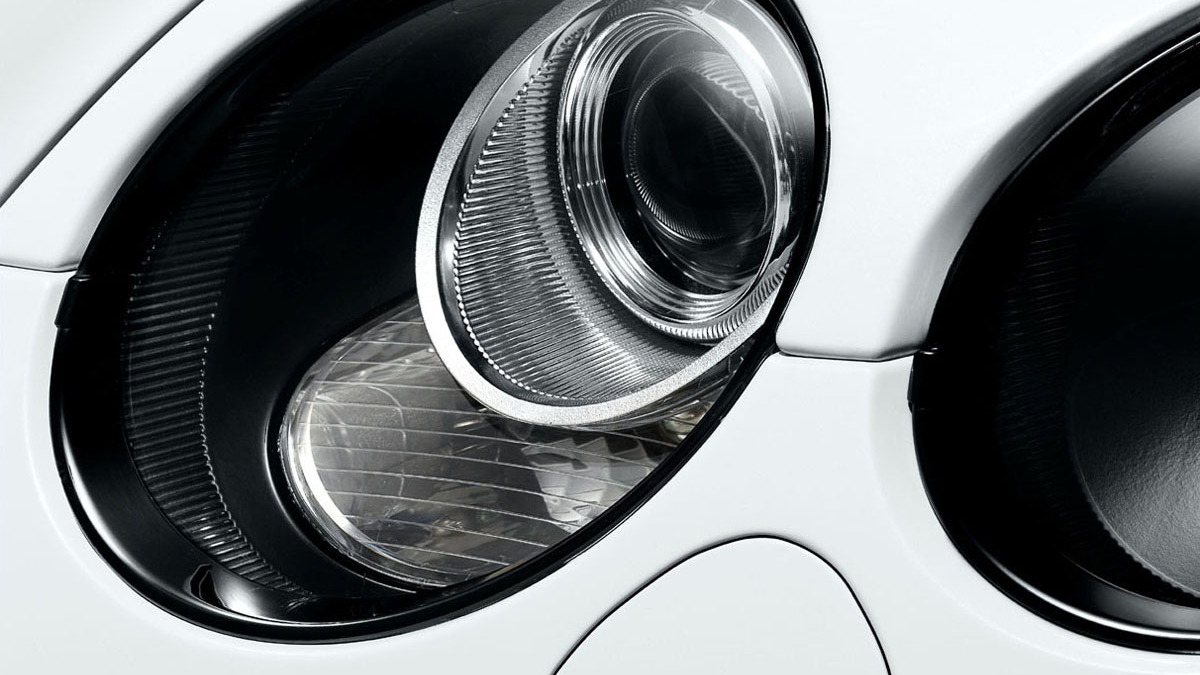The first impression of the $273,515 Conti Supersports is visceral: You think “tuner,” though not perhaps the way you visualize the neighbor kid’s Accord, slammed and given wider rubber.
Though, honestly, there is some of that after all.
Here though it’s largely not for poseur intent. The Supersports rides about a half-inch lower than other Continentals (.4 inches in front; .6 inches lower in the rear). It gets giant, 20-inch gloss black wheels shod with custom, 275/35x20-inch Pirelli P-Zero UHP rubber; the rear track is two inches wider than any other Continental to accommodate the massive footprint of the wider wheels and tires.
There’s even more function behind the wheels, where you’ll eyeball the largest production carbon-ceramic brake rotors ever sold (16.5 in., front; 14 in., rear), along with eight-piston calipers. Such hardware aids mightily in stopping—in a car that can chase down 60mph in 3.6 seconds and 100mph in under nine seconds, and is the fastest Bentley in the history of the marque, you want insanely potent binders. The lighter rotors also reduce unsprung weight at each corner by 11 lbs. Less weight at the wheels increases the litheness of the massive two-seater, as does the revised multilink suspension and the addition of stiffer bushings. “Litheness” in a nearly 5,000 lb. car? Yes: more on that in a moment.
Not everything you see from the outside has a function, however. The Supersports’ heavy eyeshadow headlight trim and blacked out grille are strictly to put other, lesser Bentleys on notice—this car is purpose-built for performance.
That theme continues inside the car. “Bentley” makes you think boardroom oak and tobacco-hue leathers. Here we find bordello-red leather sport-bucket seats with carbon-fiber frames, charcoal Alcantara inserts in said perches, and a quilt of Alcantara wrapping in a horseshoe sweep from door latch to door latch, with a fine, red accent stitch enhancing the diamond pattern of the material.
Behind the front buckets the back seats have been removed to further reduce weight; instead there’s a parcel shelf, in front of which is a non-supportive carbon fiber pole, the better to prevent anyone from mistaking the area for a place to sit. More carbon blankets the dash and the center stack/center console, and to complete the look, as is Bentley tradition, controls are done in overweighted, often knurled aluminum—in a different context these conjure the heft of old-money accoutrement like S.T. Dupont cigar lighters, even if the rest of the cabin trim makes you think nouveau riche, not aristocrat.

2010 Bentley Continental Supersports
Driving the Supersports is a simpler affair than you might anticipate. The paddle-shift, six-speed transmission is superior to that of the one in the similarly costly Aston Martin DBS Volante. In that V-12 flyer automatic mode is a bit jolty—shifts are always a half-beat late. But Bentley’s clutchless manual is as smooth as single malt, whether you do the gear toggling or tool around and let the algorithms sort out shifts for you. This is only apt, as Bentley is part of the Audi/VW/Lamborghini family, and those brands have some of the best clutchless manuals invented.
The ZF gearbox of the Supersports is tied to a six-liter, twin turbo, 621hp W-12 engine. Horsepower is up from 550hp in the base Continental and 600hp in the GTC Speed. Better still is that the Bentley’s peak torque of 590 foot-pounds arrives early, at 1,700rpm, and doesn’t flag until 5,600rpm, when in any gear you’re pretty much flying. That much brute force is intoxicating, and although this engine has seen life under the hood of the ill-advised VW Phaeton, here the exhaust has been tuned for so much more deep-bass boom at the low end and raspy brass at full rev, you’ll never think of the engine’s corporate parentage.
You also aren’t reminded of, oh, a Lamborghini. Maybe that’s because Bentley is British in origin and in that Anglo way, the brand has always been more focused on pure freight-train force rather than the sideshow opera you get from a V-12 born in Sant’Agata, Bolognese.
One trait that is similar is how all-wheel-drive is employed to put that mind blowing torque to the pavement—here the split is 60 rear/40 front, and as with Audi and Lamborghini, it greatly improves take-off and if you’re courageous, using the throttle to straighten the car out of corners. So much rubber can overcome even the inertia of a 4,940 lb. curb weight, as can stability control. Speaking of which, the car comes with three modes for the system, so you can decide how much hero help you want (in the middle setting there’s room to play but also margin for error) and four ride settings: Comfort, Normal, Sport 1 and Sport 2. If you own a test track you may need the sternest of these but otherwise the Supersports feels buttoned down at all times, and on beaten down Northeastern roads where we were testing can seem overstiff if you select Sport 1 or 2. A highlight of the Bentley is steering feel which, even in moments of drama is nicely weighted, super precise, and also serene, a balance that you won’t find often even in this thin-air segment of the market.
Another thing you won’t find many of is $275,000 cars with seats that can’t be ratcheted upward—only rake and tilt are options with the Supersports. While Bentley dumped their normally gajillion-direction adjustable armchairs in favor of these much lighter carbon-and-faux-cowhide buckets, we cannot imagine that every Supersports buyer is at least 5’10”, which is what you’d have to be to find yourself fitting perfectly behind the wheel. Yeah, I’m somewhat shorter than that at 5’8”, but that doesn’t make me a midget.
Or perhaps this is one sacrifice you make if you want a car this exceptionally fast and otherwise exceptionally comfortable.
Still, from an American perspective it would seem Bentley isn’t in a good position to alienate a single would-be customer: sales fell a whopping 50% in the U.S. in 2009. With the well-heeled trying very hard to be inconspicuous, one wonders whether a louder, wider, lower Bentley is the right car for the super rich of the West.
Then again I bet it doesn’t matter what we think—there are probably enough newly rich Chinese, Russian oligarchs and Emirates-dwelling customers to buy every last Supersports Bentley can sell. And if you have $275k, I’m willing to bet they can find a way to make you more comfortable behind the wheel.





